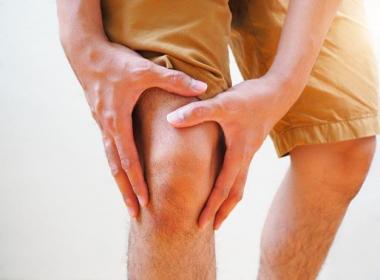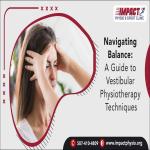When it comes to therapeutic modalities, few techniques have garnered as much attention in recent years as dry needling. As its popularity rises, especially in places like Edmonton, understanding the technique, its advantages, and its safety implications is essential for those considering it as a treatment option. In this post, presented in association with In Step Physical Therapy Edmonton, we delve into the intricacies of dry needling.
What is Dry Needling
Dry needling, a modern therapeutic approach rooted in Western anatomical and neurophysiological science, distinctively differs from traditional acupuncture. This technique involves the precise insertion of sterilized needles into specific myofascial trigger points. When these needles stimulate a trigger point, they can induce a beneficial local twitch response, an involuntary muscle contraction that helps 'reset' the muscle from a painful state to a more relaxed and functional one. While primarily aimed at desensitizing hypersensitive structures and restoring motion, dry needling Edmonton also aids in improving blood flow, reducing muscle tension, and promoting overall healing, making it a transformative tool in managing pain and musculoskeletal issues.
The Science Behind the Relief
Dry needling, at its core, is a physiological response manipulator. While it might seem like a simple procedure, the science behind it is both intricate and fascinating:
Myofascial Trigger Points: These are knots or tight bands within muscles that can cause pain over a larger area. Often, they develop due to muscle overuse, trauma, or even sedentary lifestyles. The body, in an attempt to protect itself, might form these trigger points, but they can lead to discomfort and decreased function.
Neurological Reset: When a needle is inserted into a trigger point, it can cause a localized twitch response. This twitch is a spinal cord reflex, leading to a brief contraction of the muscle fibers. This reflex helps in 'resetting' the muscle from its painful contracted state to a relaxed one.
Biological Healing: The minor injury caused by the needle induces a localized inflammation response. While 'inflammation' might sound negative, this controlled, small-scale response is therapeutic. It leads to increased circulation to the area, as it brings with it oxygen and nutrients essential for tissue healing. The body then expedites the removal of pain-causing metabolites, leading to pain relief.
Endorphin Release: The act of needling can stimulate the body to release endorphins, our natural pain-relieving chemicals. They act on the opiate receptors in our brains, reducing pain perception.
Benefits of Dry Needling
Pain Reduction: Dry Needling can effectively alleviate localized and referred pain.
Improved Mobility: By targeting and releasing tight muscle bands or knots, dry needling can improve joint and muscle function.
Enhanced Circulation: The process can increase blood flow to the targeted region, promoting healing.
Release of Neurotransmitters: Dry needling has been shown to lead to the release of endorphins and other pain-inhibiting neurotransmitters.
Safety and Precautions
Dry Needling, when administered by trained professionals, is relatively safe. However, there are essential safety guidelines:
Sterile Equipment: Always ensure that the needles used are sterile to prevent infections.
Professional Training: Only professionals trained in dry needling should administer the procedure to ensure precise targeting and reduce risks.
Patient History: Before undergoing dry needling, patients should discuss their medical history, especially any issues with blood clotting, with their therapist.
Post-Treatment Care: Some people may experience minor soreness after the procedure. Applying heat, gentle stretching, and staying hydrated can help alleviate this.
Dry Needling Precautions: Who Should Approach with Caution
While dry needling can offer significant relief to many, it's not suitable for everyone. Here are some scenarios where it might be best to consider alternative treatments:
Blood Disorders: Individuals with bleeding disorders like hemophilia or those on anticoagulant medication might be at risk of excessive bleeding or bruising.
Phobia of Needles: For obvious reasons, those with an intense fear of needles might find the procedure too distressing.
Local Skin Conditions: Infections, burns, or wounds in the targeted area can make dry needling unsafe.
Pregnancy: While not strictly contraindicated, it's generally advised to avoid dry needling during pregnancy, especially in the pelvic and lower back regions.
Lack of Diagnosis: Dry needling should not be the first line of investigation or treatment. A clear diagnosis should be established, and the need for dry needling should be determined by a professional.
Post-surgical Patients: Those who have recently undergone surgical procedures in the area to be treated should wait and consult with their healthcare provider before undergoing dry needling. It's crucial to consult a trained professional and discuss your medical history to determine if dry needling is an appropriate choice for you.
Dry Needling vs. Acupuncture
While both use thin, sterile needles, dry needling, and acupuncture are fundamentally different. Acupuncture, with its values rooted in Traditional Chinese Medicine, focuses on balancing the body's energy. In contrast, dry needling targets myofascial trigger points, aiming to alleviate muscular pain and improve mobility.
Conclusion
Dry Needling offers a promising avenue for those seeking relief from musculoskeletal pain and movement restrictions. As with any therapeutic intervention, an informed decision, backed by knowledge and expert consultation, ensures the best outcomes. Embrace the potential of dry needling, but always prioritize safety and professionalism.
Also read about:
The Healing Power of Physiotherapy Restoring Function and Enhancing Well being
Dry Needling A Precision Pain Relief Technique
Duct Cleaning for Pet Owners What You Need to Know
















